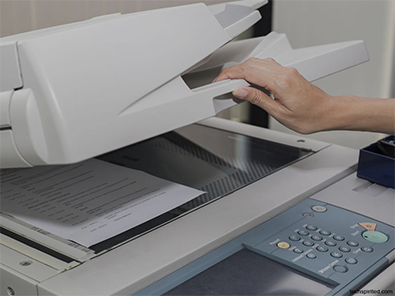MPS Is Crucial to the Delivery of Workflow Software
This guest blog was contributed by Michael Rich.
If you have followed this blog closely over the past year, you likely noticed a recurring theme: MPS providers should look beyond print reduction in order to create a more profitable and sustainable MPS business. The interesting point to consider is that MPS is just as critical to helping businesses drive workflow changes.
To create real, extended value from MPS initiatives, organizations must consider how workers access, manage and share documents. From document capture to digitization and printing, understanding the various ways information flows through an organization is critical to identifying best practices as well as where inefficiencies and waste occur in the document environment. An MPS solution, deployed with the right software and designed with strategic objectives in mind, is key to this process.
The first step in understanding how this can be accomplished is by recognizing the three pillars of an effective MPS solution: print management; scanning and workflow; and converting, editing and sharing. By addressing these elements through an integrated MPS solution, the MFP can be transformed into a strategic tool to address critical business objectives.
Individually, these elements are often viewed simply as cost centers and a drain on IT resources. Printing, for example, is considered a necessary business function, but one that is difficult to manage and has costs that are not easily recovered. Scanning is primarily viewed as a means to store documents – a specialized task that typically occurs at the end of a process. Meanwhile, most look at document conversion as simply scanning to a PDF file, creating portable documents that are not crucial to existing document workflow.
But with MPS software, these elements can be transformed into tools to help meet business objectives:
- Cut costs by reducing waste and eliminating nonessential paper
- Improve worker productivity by ensuring that individuals have access to the vital information they need
- Provide visibility into and control over key business processes
- Maintain the security of information while meeting regulatory compliance
Why is MPS essential to the delivery of these solutions? Because sourcing the necessary software components separately and powering every existing scanner and printer with the necessary assets is too expensive and unmanageable for most organizations – if it’s possible at all. The more effective alternative is to move these functions to fewer (but more robust) MFPs powered and managed by integrated MPS software.
By all accounts, workflow automation resides at the top of the list of IT initiatives among businesses of all sizes. It offers significant opportunities to trim costs by reducing the amount of time workers spend on performing specific tasks, which ultimately means improved performance. Nevertheless, many organizations struggle with the notion of implementing content management and workflow solutions. Without an upfront plan that is based on strategic objectives and corporate commitment, the process can seem very overwhelming.
Make sure that your MPS solution is grounded in the three pillars of MPS workflow. Equip your sales organization with the necessary tools and assets to help customers identify opportunities for workflow automation and process improvement – and actually build those solutions into your MPS offering. This way, you can leverage MPS to transform your customers’ business, leading to long-term customer relationships and a much stronger competitive position.
If you are attending Business Imaging Expo Dec. 10-12 in Las Vegas and would like to hear more on this topic, George Seymour, Nuance’s vice president of sales, will be presenting “The Three Pillars of MPS Workflow” on Dec. 10 at 2:00 p.m. during the Workflow Executive Summit. We hope to see you there!
Michael Rich

Posted on 11/21/2013


